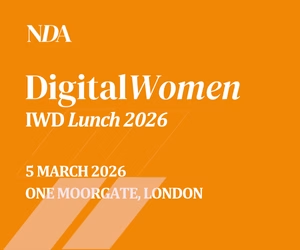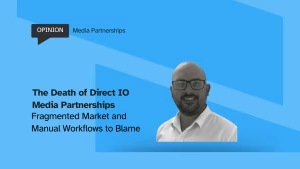At an exclusive roundtable hosted by NDA at this year’s Cannes at its venue Maison NDA, attendees debated the extent to which digital advertising impacted brands’ sustainability efforts. Are ad effectiveness and a drive to net zero mutually exclusive?
“In terms of the actual impact we have, you might immediately think of physical media,” suggests Victoria Brooks, Global Strategy Director, Responsible Marketing Agency. “But actually, digital media itself has the majority of the carbon footprint because of all the data transfer, storage and so on.”
This can come as something of a shock even to seasoned professionals. Berit Block, Global Marketing Director, WeTransfer explained that they measured one particular campaign that performed well, only to find it was still a hefty sustainability issue. “We measure every campaign that we run on our platform, measure the emissions and give a report back to the advertiser. On one occasion, the campaign was 80% lower than industry standards, yet the emissions were still the same as a 4,000 km car journey. That’s very low for a digital ad campaign but it really shocked me.”
Measurement is naturally a huge sticking point. In an industry already struggling with effectiveness metrics, adding sustainability to the mix can confuse matters even further. We all know that what gets measured gets done, so it’s an issue that needs sorted out, pronto.
“Everyone knows [sustainability] is a more effective [way to do business] but the current metrics don’t show sustainable media as being more effective,” warns James Florence – Head of Advertising Technology, Immediate. He notes that the GARM (global alliance for responsible media) standards should really help with this but also acknowledges that the industry can’t wait for outside help.
“The first thing we did, which was really important, was measurement. A lot of publishers are reticent to engage with this, they feel it’s another thing they must pay for. That’s reasonable. But it’s [still] a good thing to do. As a publisher, we have a tonne of power over this stuff,” Florence states.
Ultimately, attendees agreed that, as they work in a creative industry, it makes sense to think creatively about sustainability. “Sustainability expands everyone’s creative thinking about how they should really be doing things. The stuff we’ve already been talking about for many years, such as how we become more efficient with media buying outcomes – it’s never really been done. Maybe sustainability is what drives us forward,” proposes David Shaw, Co-founder and CEO, Cedara.
That creative thinking ranges across the board, anything from business models and pricing to the use of tech, to procurement and even to how creative and media work together. Certainly, sustainability has to be part of the conversation from the get go.
“I’ve worked with brands who have specific people responsible for ESG as part of the procurement piece. They will go and look for partners who are actively demonstrating sustainability,” reveals Deborah Gbadamosi, VP Inclusion for IAA.
Ana Milicevic, Principal & co-founder, Sparrow Advisers, agrees: “I would like every single company in the supply chain to have a very clear, sustainability POV that everyone in the company can articulate. For a publisher, that could be that they want to maximise their direct connections, for the technology company that could be to reduce their carbon footprint by a certain percentage.”
Indeed, Immediate has seen results with this sort of strategy already. “We send out requests via prebid and open bidding and different connections, and we’ve got rid of half of the [duplicate] connections, seeing a 35% reduction in emissions with no commercial impact. DSPS are really good at filtering these things out.”
The Responsible Marketing Agency’s Brooks agrees that factoring in business priorities furthers the sustainability advantage. “We’re all about being focused on low cost, yet low cost can mean a lot of wastage. It’s not about putting sustainability and business into separate camps, but to say ‘this is not just good for the world, this is good for business’. We have to talk about it together.”
Similarly, Shaw points out that a pricing strategy can also drive this forward. “Take a big publisher where most of its impressions are sold at the same value but most don’t actually do anything. If you could dump those, you’d make it more sustainable. You just reprice the replacements that do actually work you have to be creative on how you approach it and of course, it will take time.”
Gbadamosi goes even deeper into the nuts and bolts of the process. “Bring creative and media closer together,” she insists. “Look at the assets and how they can be used – how can we build them in a more sustainable way, for example using HTML5 as opposed to flash ads – these things bring [emissions] down incrementally.”
WeTransfer’s Block issues a call to arms: “I want to see more stories where marketers are behind driving positive societal change and there are less about consumers buying more products.”
Unfortunately, for some, that might be a bit of a radical approach. “It can be so lonely if you are a champion,” admits Milicevic. “You’re constantly arguing for the existence of something that you know is going to be very important, but you are just hearing no all the time. It’s a thankless job. But, all things considered, you are doing very good things for the environment and the survival of our species.”










